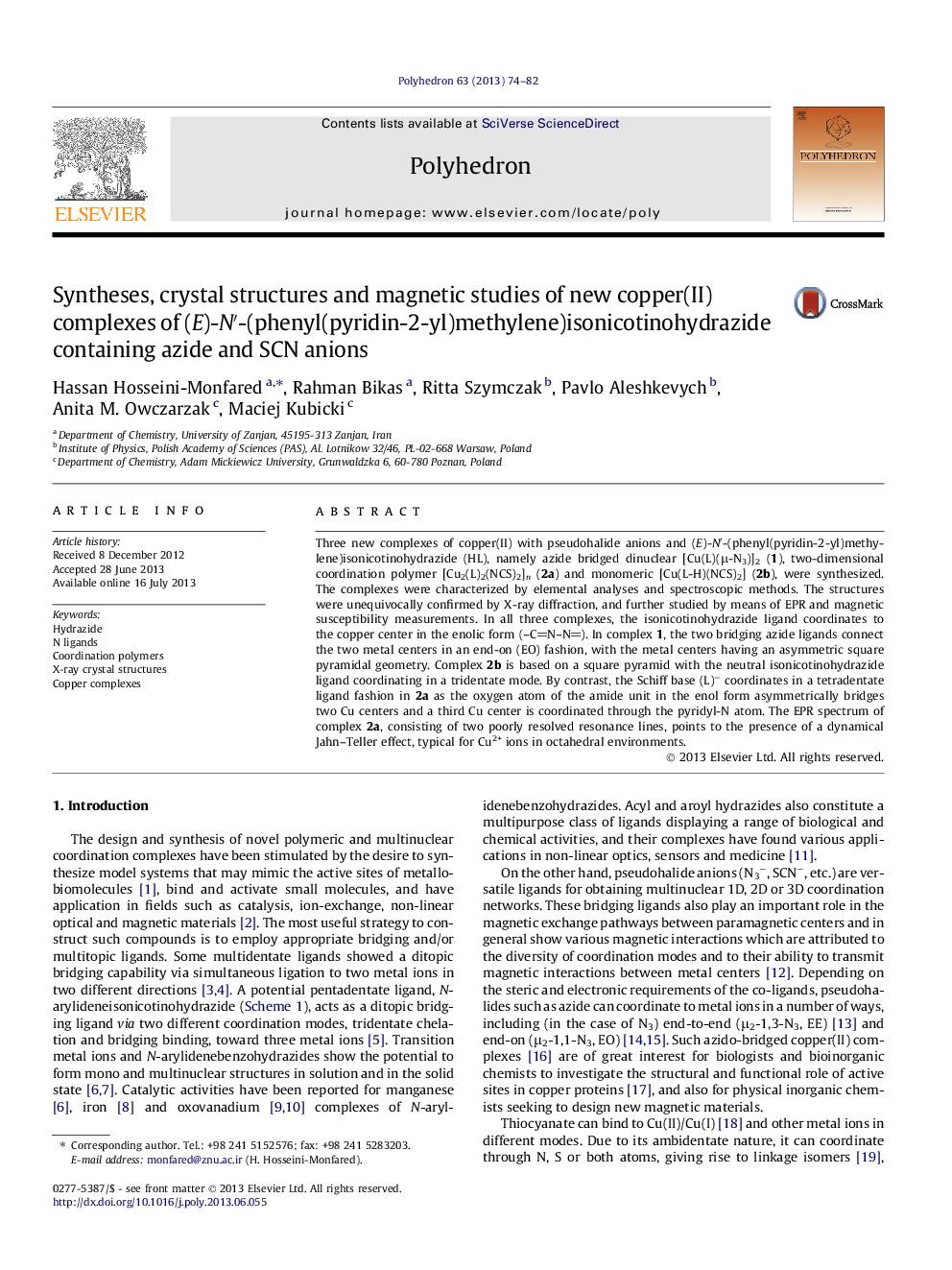| Article ID | Journal | Published Year | Pages | File Type |
|---|---|---|---|---|
| 1335559 | Polyhedron | 2013 | 9 Pages |
Three new complexes of copper(II) with pseudohalide anions and (E)-N′-(phenyl(pyridin-2-yl)methylene)isonicotinohydrazide (HL), namely azide bridged dinuclear [Cu(L)(μ-N3)]2 (1), two-dimensional coordination polymer [Cu2(L)2(NCS)2]n (2a) and monomeric [Cu(L-H)(NCS)2] (2b), were synthesized. The complexes were characterized by elemental analyses and spectroscopic methods. The structures were unequivocally confirmed by X-ray diffraction, and further studied by means of EPR and magnetic susceptibility measurements. In all three complexes, the isonicotinohydrazide ligand coordinates to the copper center in the enolic form (–CN–N). In complex 1, the two bridging azide ligands connect the two metal centers in an end-on (EO) fashion, with the metal centers having an asymmetric square pyramidal geometry. Complex 2b is based on a square pyramid with the neutral isonicotinohydrazide ligand coordinating in a tridentate mode. By contrast, the Schiff base (L)− coordinates in a tetradentate ligand fashion in 2a as the oxygen atom of the amide unit in the enol form asymmetrically bridges two Cu centers and a third Cu center is coordinated through the pyridyl-N atom. The EPR spectrum of complex 2a, consisting of two poorly resolved resonance lines, points to the presence of a dynamical Jahn–Teller effect, typical for Cu2+ ions in octahedral environments.
Graphical abstractThe synthesis, structure and magnetic properties of an azide bridged dinuclear copper(II) complex and a 2D coordination polymer of copper(II) containing a hydrazone based O,N,N-donor ligand are reported. The conditions for the conversion of the 2D polmer to a mononuclear Cu(II) complex and the first example of enol oxygen bridging are presented.Figure optionsDownload full-size imageDownload as PowerPoint slide
